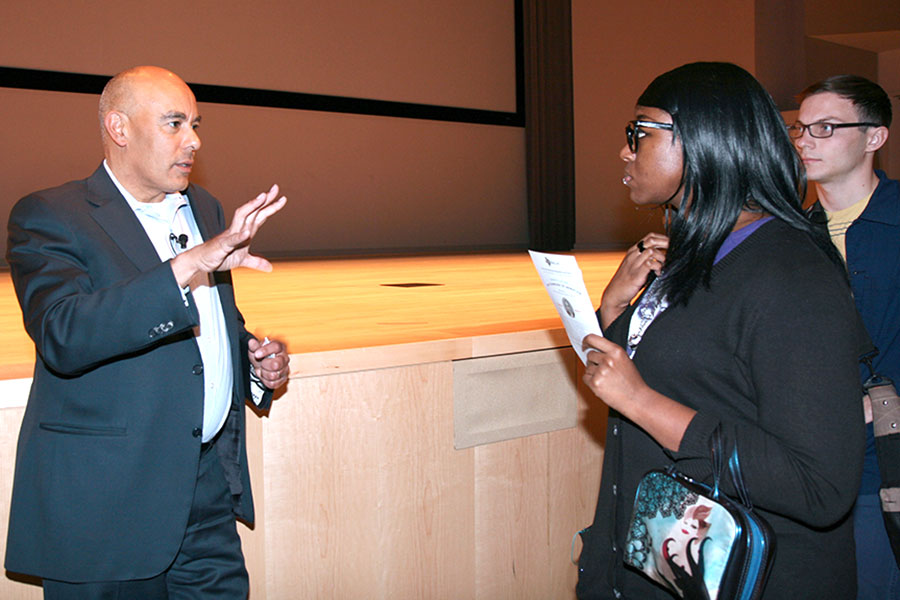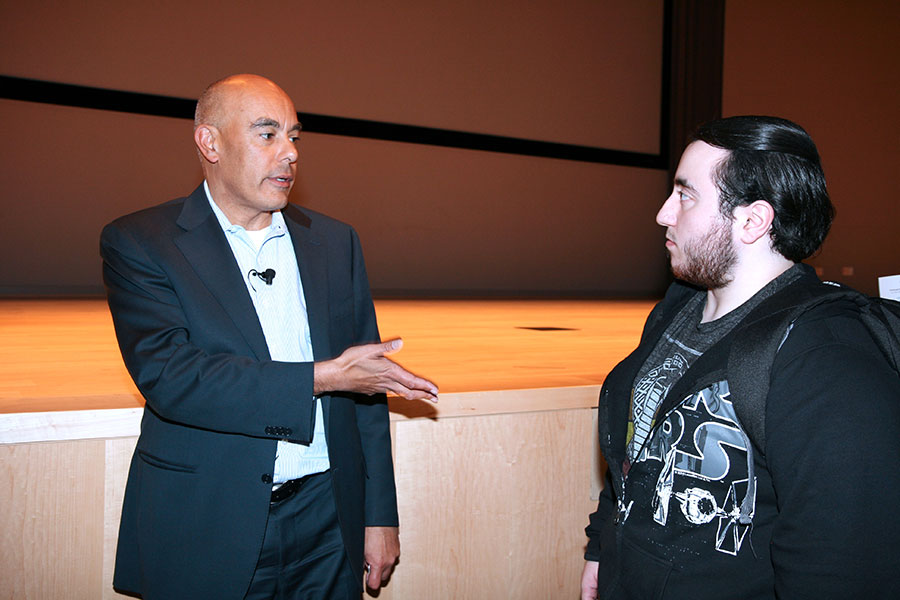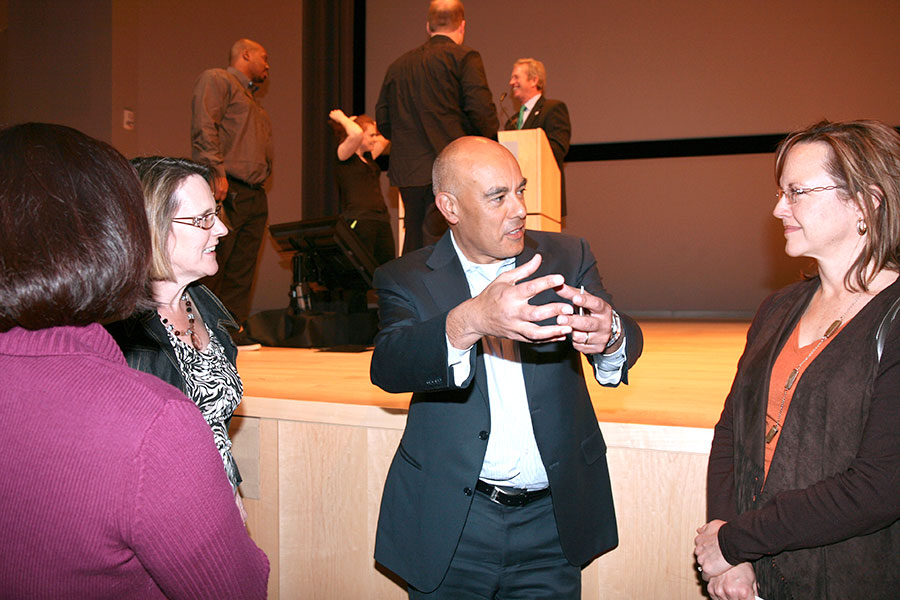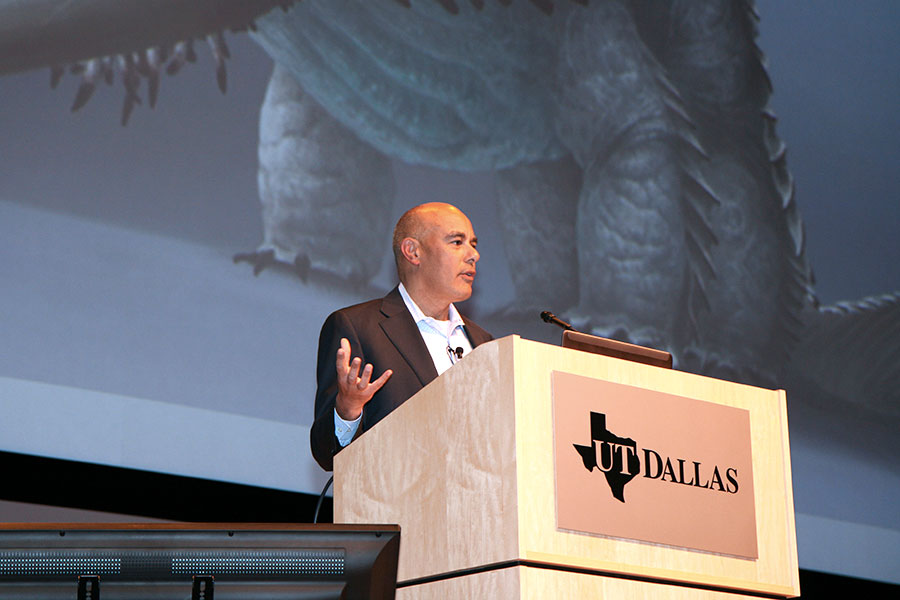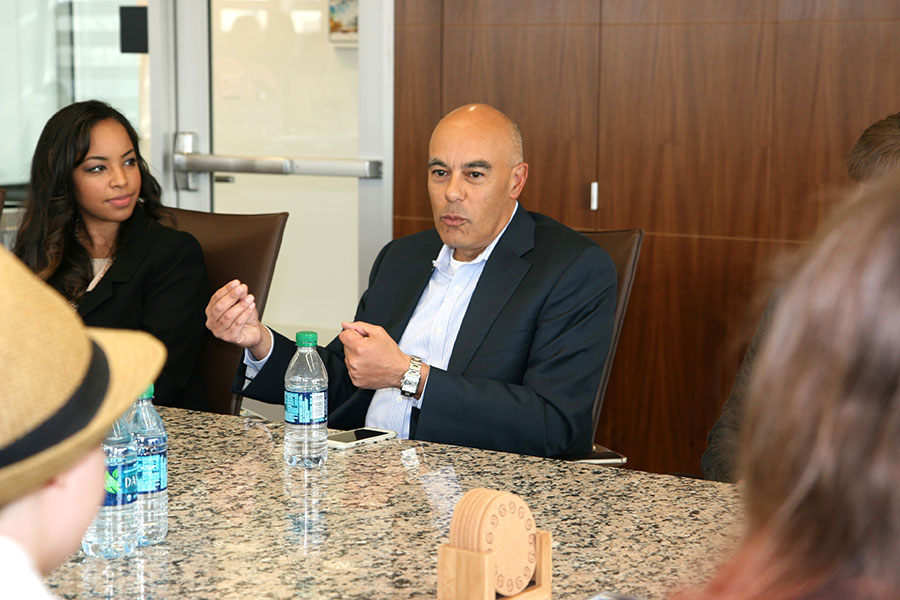DreamWorks Executive Reveals Inner Workings of Animation Process at ATEC Lecture
By: | Feb. 12, 2015
In creating the hit computer-animated film How to Train Your Dragon 2, animators wanted to pull viewers into the action as dragons zipped through the air, the sun shining at their backs, and artists wanted to transport audiences into the magical and unworldly.
But the designers couldn’t do this on their own: Every scene in an animated film requires massive amounts of science, engineering and mathematics.
Lincoln Wallen, chief technology officer of DreamWorks Animation, launched the 2015 ATEC Distinguished Lecture Series with a talk titled “Science and Engineering: The Art of Experience” in which he explained how big, complex systems containing mountains of data and equations are made small and simple during the animation process.
“Designing an animated experience requires solving problems — thousands of physics simulations each day,” Wallen said. “How to Train Your Dragon 2 required 80 million compute hours to produce. That’s done on a supercomputer consisting of over 20,000 individual computers involving 200 terabytes of data, half a billion digital files and 250 billion pixels that are crafted for the film.”
But despite the scientific know-how needed to create flying dragons, animators and artists have become less involved with the mechanical aspects of creating a film and have been given more creative freedom, thanks to new technologies.
“Dragon 2 was significant because it was my favorite, but also because it was the first film that we used a new production platform, Apollo, that has pushed the boundaries of technology to improve the viewer experience,” Wallen said. “In the past, computers turned artists into engineers. But Apollo software gets them back to analog experience — the ideal artistic environment.”
Purchasing Tickets
Prices vary between $10 and $20 for seats in the lower level of the Edith O’Donnell ATEC Building’s lecture hall. Tickets for balcony seats are $5.
Staff and faculty members can purchase up to four tickets for each lecture that will be discounted by $5. Emails were sent to staff and faculty with a discount code. The discount only applies to assigned seats in the $10-to-$20 range.
If seats are still available, free standby tickets will be distributed to students with a valid Comet Card beginning one hour before the lecture. First come, first served. One ticket per student.
For more information and to purchase tickets, click here using a desktop or laptop computer.
Wallen explained that Apollo represents the next generation of media creation technology, deployed in and through the cloud.
“In creating Apollo, my vision was to set a new course for innovation at the studio utilizing a novel approach — making our end users, namely our artists, intimately involved in the development process of software to enable creativity,” he said.
Eric Farrar, assistant professor of 3-D Computer Animation in the Arts and Technology program at UT Dallas, said it’s important for studios like DreamWorks to continue to push technology and make the filmmaking process more intuitive so computer artists won’t have to become computer engineers in order to make their craft.
“The takeaway for students should be that on the technical side of things, there are still huge and complex problems to be solved, but those problems are more about conservation of resources and building efficiencies now than about how to make something look photo-realistic,” Farrar said. “We’ve always told our students that the computer is a tool that can be used to make great art, just like a pen, pencil or paint brush, and I think DreamWorks is really pushing to make the computer interfaces for 3-D animation just as intuitive and natural as picking up a pen or pencil.”
Some of Farrar’s students who are studying animation were in attendance.
“The talk was inspiring,” said Huda Hashim, who is pursuing a master’s degree in ATEC. “Lincoln Wallen was enthusiastic about DreamWorks’ technology and how they use it to convey stories in a unique way. As an aspiring 3-D artist for animated films, it seems to me that he has expanded the horizons for the future of computer animation. His visit proves that by merging the worlds of software engineers and creative artists we will be able to produce magical things in the world of animation.”
Wallen ended his talk by showing a trailer for DreamWorks’ next movie, Home, a comedy about an alien race in search of a new place to live.
When the lights came up and Wallen fielded questions from the audience, he was asked how students might become more competitive for jobs at companies like DreamWorks. His response: engineers, mind your math, and animators, hone your graphic skills.
The next speaker in the lecture series will be John Maeda, a world-renowned artist, graphic designer, computer scientist and educator, whose career reflects his philosophy of humanizing technology. His talk, “Turning STEM into STEAM” will be at 7:30 p.m. Wednesday, March 4. Tickets are available now.
Media Contact: The Office of Media Relations, UT Dallas, (972) 883-2155, newscenter@utdallas.edu.
